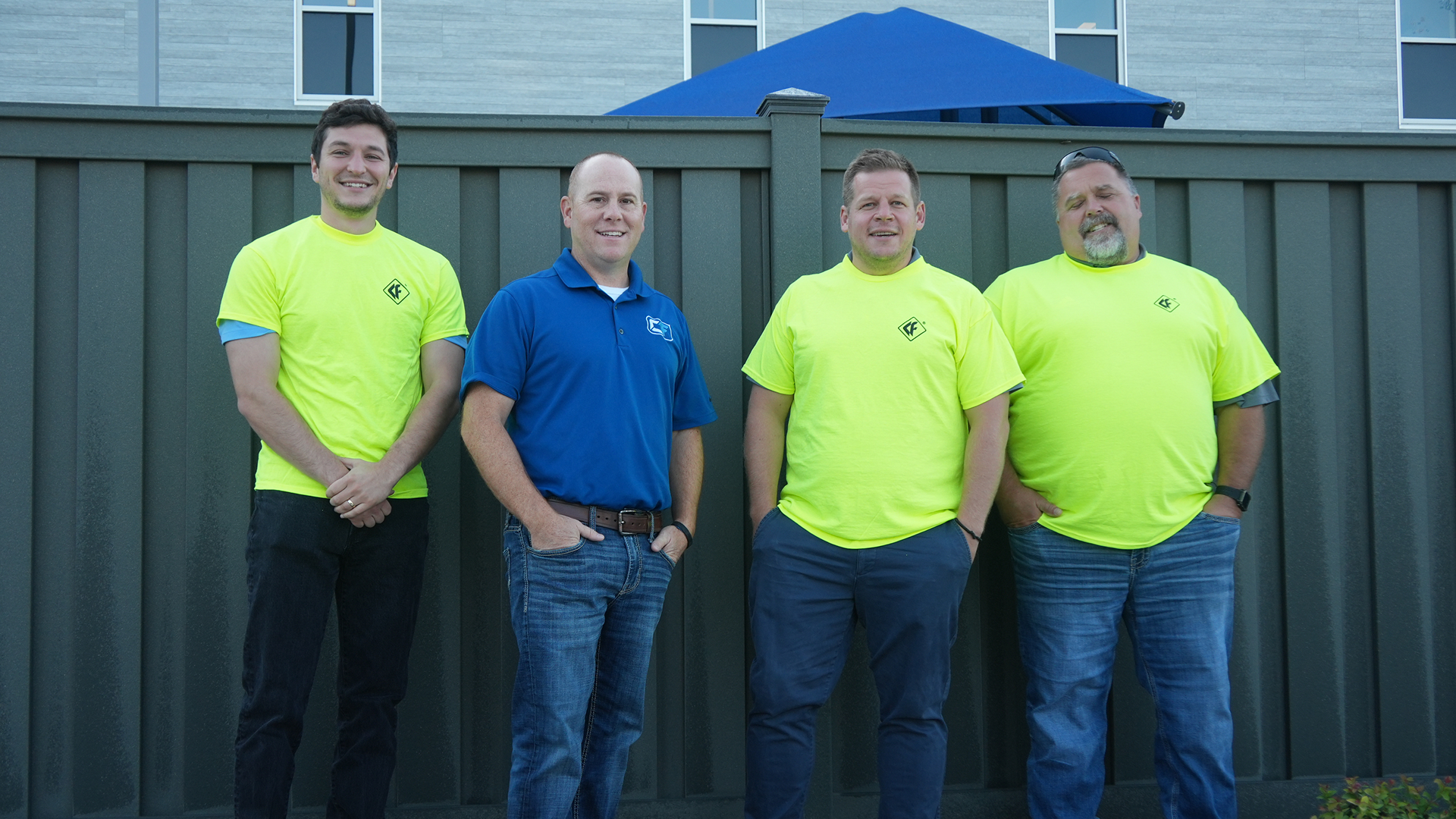A century of hard-earned wisdom from the crew leaders who keep projects moving.
When a Century superintendent shows up to a site at 6 a.m., they're carrying forward lessons learned over four generations—knowledge passed from master to apprentice since 1917, refined through thousands of installs, and proven on projects other contractors won't attempt.
The stakes are high. According to recent industry research, construction jobs were delayed an average of over 46 days in 2022, and only 25% of construction projects finish within 10% of their original deadlines. The difference between meeting your deadline and missing it often comes down to what happens before the first post goes in the ground.
Our superintendents average 8.4 years with Century—nearly triple the industry standard. Here are five lessons they want to share.
1. Walk the Site Before You Start—Really Walk It
Plans tell you what's supposed to be there. A site walk tells you what actually is.
Our superintendents arrive early, walk the entire perimeter, and look for what drawings don't show: drainage patterns, vehicle wear, trees interfering with equipment access, and evidence of underground utilities that aren't marked. One superintendent caught a major gas line running directly through a planned fence line—something that would have cost the GC weeks and tens of thousands if discovered mid-install.
The lesson: invest an extra hour before you start. It pays back in avoided change orders and realistic schedules.
2. Plan for Frost and Soil Conditions—They Will Matter
Frozen ground stops work. So does saturated clay. Our crews adjust schedules around frost depth, plan equipment access during wet seasons, and communicate early when conditions will delay progress.
In the upper Midwest, frost can penetrate three to four feet deep. Experienced superintendents build contingency time into winter schedules, bring frost-capable augers, or plan installations during shoulder seasons. Soil matters just as much—heavy clay requires different backfill than sandy loam, and rocky terrain demands specialized equipment and more time per post.
3. Coordinate Utilities Early—Don't Assume Markings Are Complete
Utility locates are done, posts are marked, digging starts—and then someone hits an unmarked cable or waterline.
Century's superintendents call for re-marks if the site has changed, hand-dig test holes in high-risk areas, and communicate immediately if something looks off. One lesson passed down through our crews: if a site has been around for decades, there are probably utilities that predate modern record-keeping. A little caution upfront can save days of downtime and thousands in repair costs.
4. Right-Size Your Crew for the Complexity, Not Just the Linear Feet
A straightforward chain-link job on flat ground can move fast with a small crew. But high-security installs with crash-rated posts, concrete footings, and site-specific engineering—the kind we do at prisons, bridges, and critical infrastructure—require more hands, specialized equipment, and more time per section.
With dozens of crews and 89 installers across five regional locations, our superintendents adjust team size daily. Too few workers creates bottlenecks. Too many burns the budget without speeding up the work. The right balance comes from experience and having the scale to deploy resources when needed.
5. Communicate Problems Early, Not When They Become Disasters
Encountered unexpected ledge rock? Call the GC that morning. Equipment breakdown? Same day. Weather delay? Communicate the revised schedule immediately.
A two-day delay communicated early allows everyone to adjust. The same delay communicated at the deadline damages relationships and reputations. Our superintendents know that transparency, backed by the stability to actually solve problems, is what keeps clients coming back for generations.
The Compound Effect
None of these lessons are revolutionary on their own. But applied consistently over decades—passed from veteran installers to newer crew members, refined through thousands of complex projects—they compound into something valuable. Projects that finish on time. Clients who trust you. And a reputation built on reliability.
While private-equity firms cycle through the industry every five years, we've focused on the uninterrupted mastery required to succeed on the most complex projects. That's how you learn to secure Lambeau Field, install fencing on 120-foot bridges, and tackle work that other contractors must decline.
Great companies are built on small, right decisions repeated over decades. And nowhere is that truer than in the field, where the work actually gets done.
Insights from over 100 years of experience
RElated Posts
Insights from over 100 years of experience.

Why Anti-Climb Fencing Is the New Standard for Critical Infrastructure
Security perimeters are evolving - and matching your fence to the threat level has never been more important.

The Gate Safety Gap That Puts Lives at Risk
Learn the 5 UL 325 protections for automated gates and how monitoring keeps sites compliant and people safe, with one accountable partner.

Five Lessons Our Superintendents Know That Save Deadlines
A century of hard-earned wisdom from the crew leaders who keep projects moving.

Get Your Fencing Solutions Done Right with Century Fence
Taking the risk with a contractor who doesn’t have the experience or the professionalism is an expensive risk. It’s important to consider the quality or

Unique Fencing Option For Your Fence Project
Waves are typically associated with the beach and a relaxing vacation, but Century Fence recently guided the municipality of Port Washington, WI, through a successful

Fencing in a Polar Bear at the Henry Vilas Zoo
Have you ever wondered what it would take to keep a bear in a zoo? Well, Century Fence had the opportunity to take on this


